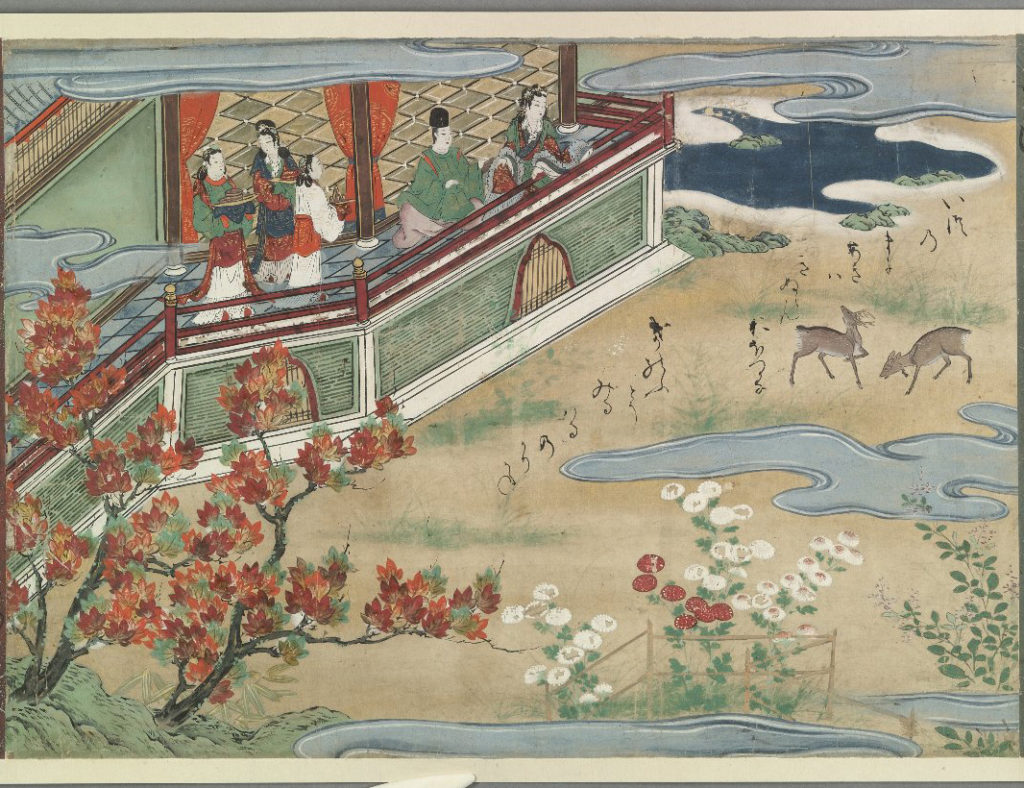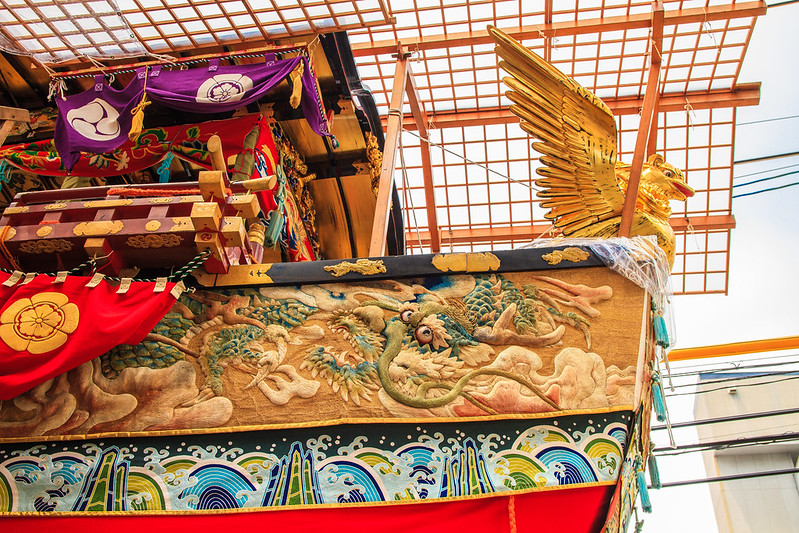
The Legend of Ryūjin
In Japanese folklore, Ryūgū-jō (竜宮城, 龍宮城, Dragon palace castle) is the underwater palace of the dragon god of the sea, Ryūjin. According to variations of the legend, the castle is made of solid crystal or red and white corals. Ryūjin’s family and loyal servants lived in the famous castle. Supposedly, its four corners have different seasons and a single day within, spanning a century in the outside world.
Golden bird figurehead of Fune Hoko
An iconic story recounts how Empress Jingū succeeded in her attack into Korea with the help of Ryūjin’s tide jewels. When Jingū had to deal with the powerful Korean navy, she threw one of the jewels,the kanju (干珠, tide-ebbing jewel) into the sea, making the tides recede. This left the Korean fleet stranded and the men were forced to get out of their ships. Once they were out, Jingū then threw down the manju (満珠, tide-flowing jewel), releasing a torrent of water that drowned her enemies. The annual festival, Gion Matsuri at Yasaka Shrine, celebrates this memorable victory. Autumn in the kingdom under the sea. Urashima Taro handscroll from Bodleian Library.
Autumn in the kingdom under the sea. Urashima Taro handscroll from Bodleian Library.
Ryūjin, who embodies the enormous strength of the ocean,controlled the tides with magical tide jewels from his castle, Ryūgū-jō. They say he has a large mouth and can transform into human shape. Ryūjin was the father of the goddess Otohime who married the hunter prince, Hoori. Emperor Jimmu, the first emperor of Japan, was the grandson of Otohime and Hoori. Thus, the Japanese imperial dynasty’s ancestors have roots that can be traced to Ryūjin.
Watatsumi is another name for Ryūjin. The Kojiki, written around 712 CE, is the earliest known written source that mentions the dragon god. The Nihongi, written sometime 720 CE, also mentions the sea god. Ryūjin shinkō (竜神信仰, dragon god faith) is a religious Shinto belief that worships dragons, a water kami possibly associated with agricultural rituals, rain, and fishermens’ luck.
Japan has several Shinto shrines dedicated to the sea god Watatsumi—the Watatsumi jinja in Kobe and Kitakyūshū and the Daikai jinja in Osaka.
The Katase-Enoshima station in Fujisawa, Kanagawa Prefecture was also designed with Ryūgū-jō in mind. These beautiful architectural designs pay tribute to the unique culture, customs, and traditions of Japan.
